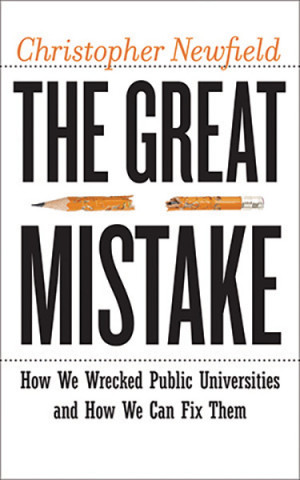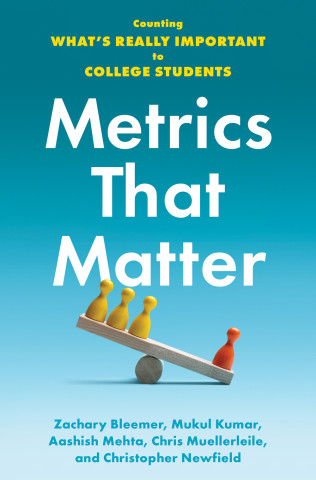The evidence for "better" boils down to two things. First is the official UCOP interpretation of this year's legislative budget as one of the best increases ever, and thus a sign of state generosity to come. Second is the passage of the "cohort-tuition" plan, which will break the decade freeze on tuition income. The lead budget officials at regents' meetings, Nathan Brostrom and David Alcocer, have stressed the value of getting increases in both the state and tuition components rather than relying on increases on the state side only, where even a 5% increase translates into a 2% improvement in core funds, once it's averaged with zero on the tuition side.
On the first point, the Academic and Student Affairs Committee was informed that "The 2021-22 State Budget provides the University of California with the largest-ever single-year funding increase, totaling $1.27 billion dollars." Unfortunately, this greatly inflates ongoing funding. The net increase in continuing state funding is $243.5 million. I defined this real increase in relation to Gavin Newsom's May Revision. The permanent funding increase is slightly bigger in the final budget.
UC Ongoing General Fund | 2019-2020 | 2020-2021 (with cut retroactively restored) | 2021-2022 | 2 year cumulative change |
May Revision | $3,724.3 M | $3,766.0 M | $3972.1 | 6.65% |
Summer Final | $3,724.3 M | $3,766.0 M | $4009.5 | 7.66% |
Budget nerds will be pleased to see UC breaking the magic $4 billion barrier it has being aiming at for 20 years. But the real news is the budget is the explosion of earmarked funds for special purposes. The unallocated increase in general funding is $173.2 million. Everything else is a designated fund: for example, "$3 million for animal rescue operations in natural disasters." 9 such items get permanent funding. One-time funding goes to 27 more.
I've never seen budgetary reach-in quite like this. In 2016-17, for example, there were 6+4 such earmarks. The legislature is now treating UC as a platform for enacting pet projects, arriving from who knows where, that apparently fit less well in other state agencies. They incur costs to operate, so it's not obvious that they are overall net positive.
Long story short, the state reversed last year's $302 million cut and added $173 million this year, with $325 million in one-time funding for deferred maintenance (defined this year as a $7 billion systemwide problem). Those are the meaningful items. UC has no big boost from state funding.
The other half is cohort tuition, where each entering class has flat tuition for up to 6 years, but the next year's class pays more--the inflation rate plus an increment that declines annually from 2.0% to 0. That will net in round numbers somewhat more than $100 million a year once it gets going. UC tuition revenue is in the $4 billion range, so the new tuition plan will add 2 or 3% to the total. Net benefit to core funds is around half that. A 1.0-1.5% increase to core funds is at best a steady-state number.
These modest increases don't reflect increased costs. UCOP estimates costs going up 4% a year no matter what.
The most irresponsible omission is COVID-19 costs (including related losses). UCOP estimates somewhat more than $2 billion in lost revenues (Display 4); add to that an unknown amount of ongoing health mitigation costs (testing, quarantining, cleaning, and so on). The Democratic legislature pretended that these didn't exist when they cut $302 million at the height of the pandemic, and they are still pretending. Campuses will absorb these costs from their operating budgets, and that will mean cuts elsewhere.
The state's refusal to fund has some familiar dimensions. Employer contributions to retirement and capital construction are the two that will be known to readers (see the Essential Charts for a primer). Pandemic shortfalls were covered by new UC debt, which also funded ongoing construction and other costs: UC took on an additional $6 billion in debt in the last fiscal year. This will have to be paid down out of med center and campus operating funds. Debt translates a short-term into a long-term cost (see Alex Usher's good cross-national discussion).
Another likely unfunded mandate is new resident enrollment. In the mid-2010s, the Democratic legislature started not liking how high non-resident enrollments had gone, but also didn't like paying full cost for resident students (around $10,000 per head). This hurt campus quality in the 2010s, particularly during the growth years after 2015, and is a major future issue, since "UC 2030" could hit quality again because of the growth involved--to increase degree output by 251,000 in this decade to meet state workforce needs. This has been modified to adding 20,000 more resident students this decade, some at the graduate level (see the September meeting's planning document).
Since at various points in its history UC has been hurt by underfunded growth, Brostrom and Alcocer emphasized the need for the state to follow through with funding this time: both to fund this enrollment growth and to fund the replacement of non-resident students with lower-paying residents (on the latter, see Mikhail Zinshteyn's overview). They noted that the legislature has not funded some recent required growth, and showed this slide.
In short, UC had recently added around 10,000 students who paid tuition but didn't bring any of the state funding they might have assumed their family taxes had paid for, so couldn't take another 20,000 on the same terms.
At this point, rolling all this together, you might conclude that UC campuses in the 2020s won't get better, but with all this UCOP vigilance about the state keeping its funding promises, at least they won't get worse.
This presentation occurred on the Finance and Capital Strategies Committee on September 29, chaired by Michael Cohen. Before opening the floor for questions, he offered his response (at 2:22.30 once you scroll down this page).
I've said this before, but I think it's important to repeat, particularly giving our conversation coming tomorrow about enrollment growth, that, sort of framing our budget ask in terms of, "oh, we were shorted money five years ago, and have been living with it ever since," as doing this in the unfunded enrollment context, I think is absolutely the wrong approach, and it really makes the university come off as, "well, we only serve students because we get paid for them, and we're not going to serve them if we don't get paid for them."
So certainly the legislature has been very generous in its commitment to buy down our nonresident enrollment, and has really put a shining light on the need for the university to enroll students. But to suggest that we need to be paid back, for students we've been serving for years, it's just going to fall on deaf ears. And, frankly, it goes against all of the arguments the university made for years in that it wanted funding undesignated, and general purpose, so that they could decide the best way to use the funds. So, I hope that, when you bring back the budget in November, you heed these words and don't really emphasize this notion, which I don't even buy, of, you know, unfunded enrollment going back five plus years.
Got that? Me neither. Clearly Brostrom and Alcocer's point was that the University did serve all students that were over the targeted enrollment that the state funded. Regardless, Cohen in effect rejected all statements that tie doing things to having resources for them, such as "I would like to start my car, but I need gas in my tank"; "I would like to keep living in my apartment, but I lost my job and can't pay rent"; "with extra enrollments, I need to offer 650 classes in each class period, but have only 615 classrooms"; "my professional staff requests a 3% salary increase, but the state has budgeted 0% for that."
Rejecting the need for resources makes perfect sense -- as a labor of self-exoneration, since Cohen the regent is also Cohen the former budget director for Jerry Brown, and is thus the same person who didn't send the state money with the new UC students. But never mind, and enjoy picturing the world in which all Cohen cars start without fuel, no Cohen tenants are ever evicted, and all Cohen colleges run on goodwill toward students.
Cohen's outburst had the predictable effect, which was to censor budget discussion and forestall calls for UC to reject unfunded growth (since that lowers per-students resources and quality). No one objected to teaching grossly underfunded students, including the representatives of the Academic Senate. The show moved on.
So what is really the plan here?
It's not to insure that public university students learn about as much as private university students. They aren't getting--or asking for--the money for that.
It's not to increase access without diluting quality. Current budgets encourage, say, increasing biology B.A output by cutting math requirements, or maintaining study abroad enrollments by eliminating foreign language acquisition.
It's not to overcome structural racism by insuring that minority-majority campuses are as well-funded as white campuses. That kind of budget justice is not being supported.
It's not to reverse the shift away from tenure-track hiring or to fund significant staff cost-of-living increases.
It is not to reduce financial burden for UC students. Solving grad student rent burden is off the table. So is reducing the academic costs of student debt.
A UCOP talking point has been that net cost of attendance will go up more slowly with cohort tuition increases than with flat tuition for all but the most affluent students. (The grounds are that higher tuition funds higher financial aid.) In fact, student self-help expectation starts high even for the poorest UC students (about $11,000 per year for under $20,000 in family income, Display 6), and under the cohort plan, goes higher (to around $15,000 for the under $20,000s by 2028-29). Self-help expectation is set by campus officials, and is money that students who don't have private assets must earn by working while enrolled, which reduces study, or by taking on debt. The best solution for students would be low tuition so aid covers all living costs and their self-help expectation approaches zero). But that is not anything UCOP or the legislature would currently discuss. The large share of UC students who struggle with daily life will continue in the 2020s to struggle with daily life.
The plan is also not to increase funding for cultural and social research, which depends on institutional funds, though there is an obvious crying public need.
The plan is to do workforce-oriented enrollment growth at the lowest possible cost.
The de facto plan focuses on quantity rather than quality of degrees. It defines educational value through graduates' future earnings, which means directing majors towards professions that pay more. It means reserving any new direct federal funding for 2-year colleges, tweaking financial aid (increasing Pell Grant maximums), and supporting funds that go directly to students or to student support programs, like the Student Academic Preparation and Educational Partnerships (SAPEP) program, one of UC's 27 one-time earmarks.
(Note also that the "Proposed 2030 Framework Investments" are split about 50/50 between hiring new faculty to teach 20,000 more students and growing student support programs [Display 6], thus halving the faculty hiring.)
It also means burying quality problems behind the marketing of UC excellence: UC dominates the public university rankings, and recent news of Berkeley as Forbes #1 and US News' Top 10 publics give UC campuses zero incentive to increase investment.
The same is true for the extremely high rejection rates at many UC campuses, further hardening the aura of impregnable prestige. UC's per-student resources are well below their level of 20 years ago, but so what, since its rankings are so very high--and applicant demand is through the roof?
People like me argue that these rankings are not only invalid but now oddly immune to matters of educational quality, and selectivity obviously conflicts with access, and yet their image-making power, and the genuinely high quality of UC faculty, staff and students as individuals, pave the yellow-brick road to low-cost growth.
Usher sums it up well when he writes, "there are very few places with extra domestic billions to spend out there, and where there are . . . as often as not, they want to spend the money to make existing spaces cheaper, not expand the number of spaces or make existing education better." UC is options 1 and 2--more and cheaper. This Workforce UC isn't fated, but fixing it will mean a fight.





